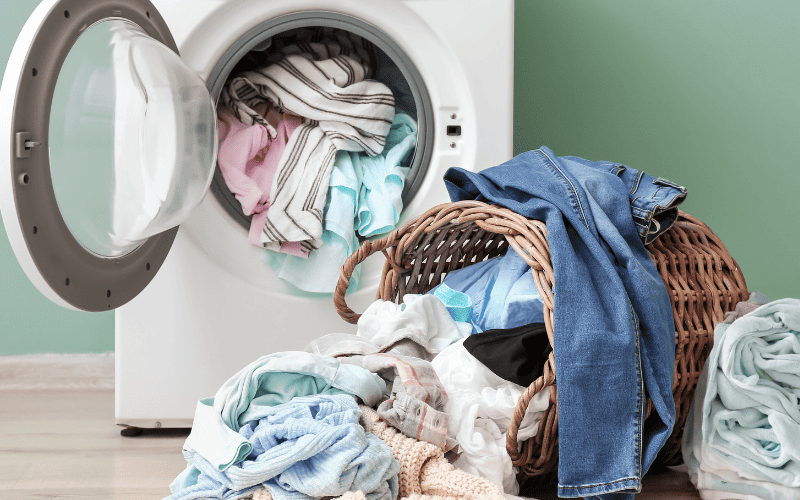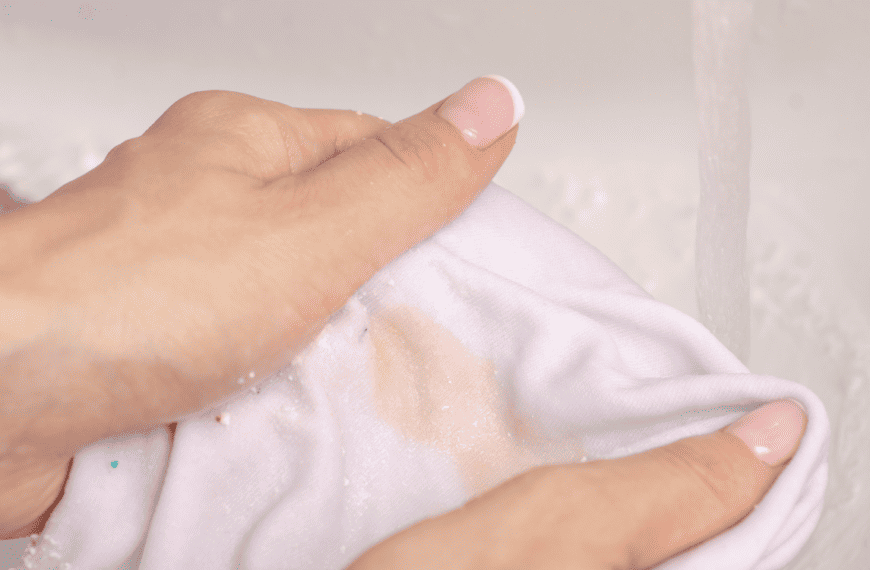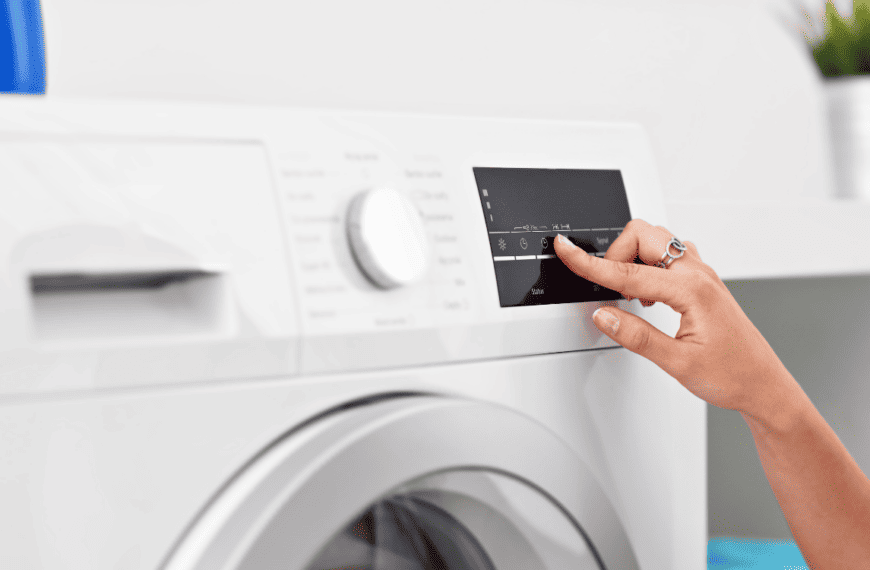I’ve always had trouble letting go of worn-out clothes, often attaching an unreasonable amount of nostalgia to old tattered shirts and pants that should have met a dumpster long ago. As such, when I’m digging through a closet or boxes in the basement, a sharp jolt of excitement always hits me when I cross a long-forgotten concert tee or work shirt.
But what hits me next? If I haven’t been storing my clothes properly, it’s undoubtedly a harsh musty smell. Suddenly, the thrill fades to frustration as I realize there’s plenty of cleaning ahead of me before I can add my re-discovered article to the wardrobe.
As I’ve found, removing musty odors from damp clothes is rarely a time-consuming aggravation when you know a few handy tricks. I’ll break down how to get rid of mildew smell in clothes to ensure your attire stays fresh and ready to wear.
Identifying Musty Smells and Mildew Stains
Is that mildew you’re smelling? You’ll likely have the easiest time identifying mold and mildew by the odor, an earthy and stale stink typical of dark, damp areas. In mildew’s early stages, you’ll notice discolored spotting on your clothes, often as a white, gray, or greenish powder. Over time, stains may deepen into dark brown or black patches.
How To Wash Mildew Smell Out of Clothes
Washing your clothes in hot water with a powerful laundry detergent is the most efficient way to strip away a mildew smell. Hot water temperatures above 140°F kill microorganisms in minutes and speed the dissolution of stains. Adding simple remedies like vinegar or baking soda will give you the best chance of refreshing musty-smelling clothes the first time.
Top Recommendation: Wash With White Vinegar
Removing mold and mildew is one of the top uses for vinegar in the home. The acetic acid halts the fungal growth while deodorizing, helping to loosen staining and musty odors. Here’s how you can use plain distilled white vinegar in the washing machine:
- Put mildewy clothes in the washing machine, and add your normal laundry detergent, measuring out slightly less than you typically use
- Pour ½ cup of distilled white vinegar into the fabric softener tray
- Run the clothes through the hottest wash cycle they’ll allow
After running them through the washer, check your clothes for leftover mildew stains before drying.
Airing out your clothes in the breeze and sunshine will finalize the deodorizing process and bleach out faint staining. But if the stains don’t come out, drying can set them in the fabric. Always look over the clothes after washing to see whether or not they need another cycle or more aggressive treatments.
Pre-Soak With Vinegar
While I’ve never had any issues with adding vinegar to my washing machine on occasion, many people worry about damage to gaskets, hoses, and metal parts. If you want to leave the vinegar out of the appliance, you can still take full advantage of its mold-killing power with a pre-soak. Follow these steps to tackle mildew smells before putting your clothes in the washing machine:
- Pour distilled vinegar into a bowl, and soak the mildewy garment
- Let the clothes sit in the vinegar for about 30–60 minutes (or longer, if desired)
- Rinse the garment in cold water, and machine-wash with the hottest water possible
Tip! For extra cleaning power, try using cleaning vinegar instead of your typical white vinegar. With a higher percentage of acetic acid, a standard 6% cleaning vinegar will work harder to remove a stubborn musty smell and mildew stains.
Add Baking Soda to the Washer
If vinegar gets some of the smell out of clothes, but you still smell a faint odor when you pull them from the washer, try washing them again with baking soda. Sodium bicarbonate is an excellent DIY household deodorizer. Its alkalinity neutralizes odors that vinegar can’t and adds a stain-fighting boost. Use these steps to put it to work to get your clothes smelling fresh:
- Add laundry to the washing machine
- Pour one cup of baking soda into the drum
- Wash on the hottest setting with your usual detergent
Tip! Baking soda and vinegar don’t make the best cleaner when mixed, but you can use them in a single wash cycle to tag team a musty smell. Add baking soda to the drum and vinegar to the fabric softener tray. The baking soda will dissolve in the hot water and work alongside the detergent to clean your clothes. The vinegar will come later with the rinse cycle, ensuring the alkaline baking soda and detergent don’t counteract its deodorizing qualities.
Use Commercial Solutions
Store-bought laundry additives are specifically formulated to tackle anything that may create unpleasant odors in your clothes, including mildew stains. I’ve always had success by pretreating with OxiClean for a few hours, using it primarily because it’s always on hand in my laundry room. But you have several practical products to consider that can help you eliminate odors in the wash, including:
Replacing musty odors with a pleasant scent, these options tackle harsh mold and mildew smells when DIY solutions don’t cut it. They’re ideal laundry room staples if musty-smelling workout gear is a common problem.
How To Dry Your Clothes
Drying your clothes thoroughly is no less crucial than proper washing techniques when you’re trying to get the funky smell of mildew out of your clothes. Rather than toss them in the dryer, hang your clothes to line dry. A moving breeze and sunshine will leave clothes smelling fresher than the dryer can, and separating them ensures every inch is dry.
How To Dry Clothes in Humid Weather
The clothesline won’t do you any good when it’s raining outside or the humidity is high. With too much moisture in the air, your clothes will be more likely to develop a brand-new musty smell to manage. In these situations, dry your clothes on an indoor rack with a fan running. If humidity is a significant issue in your area, you may want to set up a dehumidifier in your closet to prevent your clothes from developing mildew.
How To Remove Mildew Smell Without Rewashing
Don’t have the time or patience to wash out that mildew smell? Life doesn’t stop and wait for you to deal with a musty odor. Sometimes you need a fast and easy deodorizer, and fortunately, there’s no shortage of DIY and store-bought spray options, like Febreze, to get that musty smell out of clothes in a hurry.
Here are my top recommendations for getting rid of the mildew scent without needing to wash:
- Vinegar: combine white vinegar with water in a 1:1 ratio in a spray bottle, and spritz the garment
- Lemon juice: squeeze half a lemon into a spray bottle filled with water, shake well, and spray the clothing
Although it takes longer to remove the odor, you can store your clothes in a manner that gets rid of the musty smell.
Tossing your clothes in the freezer will suspend odor-causing microbes and kill the mildewy stink. Place your musty articles in a plastic bag, and leave them in the freezer for a few hours or overnight.
Alternatively, you can put your clothes in a sealed container with an open odor absorber, such as activated charcoal or baking soda. The absorbent material will attract and hold odor molecules, eventually pulling away most, if not all, of the smell. It can take a while to take effect, but unlike washing, removing unwanted odors in this way won’t demand much of your time or attention.
How To Remove Mildew Smell From Delicate Clothes
Hot water and extra cleaners can often spell disaster for delicate natural fibers like wool and silk. You can wash many garments in the washer on a delicate cycle, but I prefer hand-washing anything that might break down from the machine’s agitation. Wash with a mild detergent such as Woolite to maintain the color and the material’s integrity.
Luckily, you can still use vinegar to combat smells in your delicate fabrics. Add it to the fabric softener tray in the washer to remove funky odors, or mix it with some water to rinse your hand-washed garment. For wash-free deodorizing, you can also mix a vinegar solution to spray over your clothes.
Why Do My Clothes Still Smell Like Mildew After Washing?
If your clothes are coming out of the washing machine smelling like mildew, the clothes likely aren’t the problem. Much like shower mold, mildew has an ideal environment to grow in the washer. It’s damp, dark, and warm, and all the organic matter that sheds off the clothes during the wash creates a scum that gives mold plenty to consume and fuel its growth. Whenever you wash your clothes, it mixes some of that mildew and its musty smell with your garments.
Chlorine bleach can get rid of a mildew smell, as can vinegar. Pour ½ cup of either into the washer’s bleach dispenser, and run the machine empty on a hot water cycle. If you have a front loader, you may need to clean the inner gasket with bleach to clear away moldy buildup that often occurs in these machines.
Why Do My Clothes Smell Musty?
Putting clean clothes away in the closet only for them to come out dirty and smelly is frustrating and confusing. If they smell fine out of the washer, why are they attracting mold?
While some factors like leftover dirt and soil give mold and mildew a foundation to grow, lingering moisture is the most likely reason your clothes have a musty smell. Damp clothing will inspire mold growth, especially in a stuffy, poorly ventilated closet. If your clothes aren’t completely dry when you hang them up, or the room is overly humid, it may take only a day or two for mildew smells to set in.
How a Mildew Smell Affects Your Health
Mildew is a type of mold that develops in a flat growth pattern on the surfaces of materials. While the musty smell it causes in clothes is off-putting, the primary reason to prevent mildew from developing is the impact on household health.
Sensitive individuals may experience several immediate signs of exposure to mold spores, including:
- Itchy eyes and skin
- Stuffiness
- Coughing and wheezing
People with allergies, respiratory illnesses, or immune disorders are more susceptible to adverse effects, such as breathing trouble and infections.
Mycotoxins in certain types of mildew cause further harm. The poisonous compounds promote organ damage and disease development while exacerbating problems in at-risk individuals, such as chronic inflammation, neurological issues, and autoimmune disorders. Indoor exposure to mold and mildew can even increase the risk of asthma development in children, highlighting the need for proper preventative strategies.
How To Prevent Musty Smells in Clothes
Maintaining airflow and decreasing moisture will make life difficult for mildew. The most critical factor is ensuring you’re not putting wet clothes in the closet. Letting your clothes air dry is a huge help. Clothes in the dryer don’t always dry evenly, especially if it’s a large load. Missing a few patches of minor moisture is easy, and it’s enough to give mildew a foundation to grow.
After ensuring you’re only putting away completely dry clothes, you can adjust your laundry routine and manage the closet environment to keep mold and mildew from having an easy time developing in storage. Here are a few suggestions for preventing musty smells from becoming a recurring problem.
Dry Items Immediately
Damp towels and sweaty active gear will need a thorough washing, but drying them immediately after use will keep the musty smell to a minimum. Hang up wet items to dry in the fresh air until you have a chance to clean them.
Use Less Detergent and Fabric Softener
You may think you’re doing yourself a favor by adding extra soap to the machine to power out mildew smells, but you’re likely only shooting yourself in the foot. Putting too much detergent or fabric softener in the washing machine can leave a residue that traps microbes and the odors they cause. Try using slightly less detergent than usual, and see how you fare without adding fabric softener. In all likelihood, your clothes will come out equally clean but with less of a smell.
Set up a Dehumidifier
Humidity in the closet will make even the cleanest, driest clothes smell musty before long. Set up a dehumidifier if humidity levels regularly exceed 50% in the home. A small, quiet, and inexpensive unit like the Makayla 30 oz. dehumidifier is a perfect size for a closet. By maintaining humidity in the ideal 30–50% zone, mold won’t have enough moisture to develop.
Use Moisture and Odor Absorbers
If you can’t use a dehumidifier, get a cheap moisture absorber to trap moisture before it can feed any mildew growth. DampRid packs are perfect solutions, hanging next to your clothes to draw in humidity. Desiccant boxes like those from Vacplus work in a similar manner while sitting on a shelf.
An activated charcoal pack is a more versatile solution, a reusable tool that can absorb odors and excess moisture. After using them in the closet, you can recharge them for use in gym bags, shoes, fridges, and much more.
Can Mildew Come Back After Treatment?
Clothing is never 100% immune to mildew growth. After cleaning, taking preventative steps to reduce moisture and increase airflow are the only ways to keep the same smell from returning. Fortunately, keeping humidity low and putting only completely dry clothing in the closet are simple efforts and often enough to keep mold spores from setting root.









